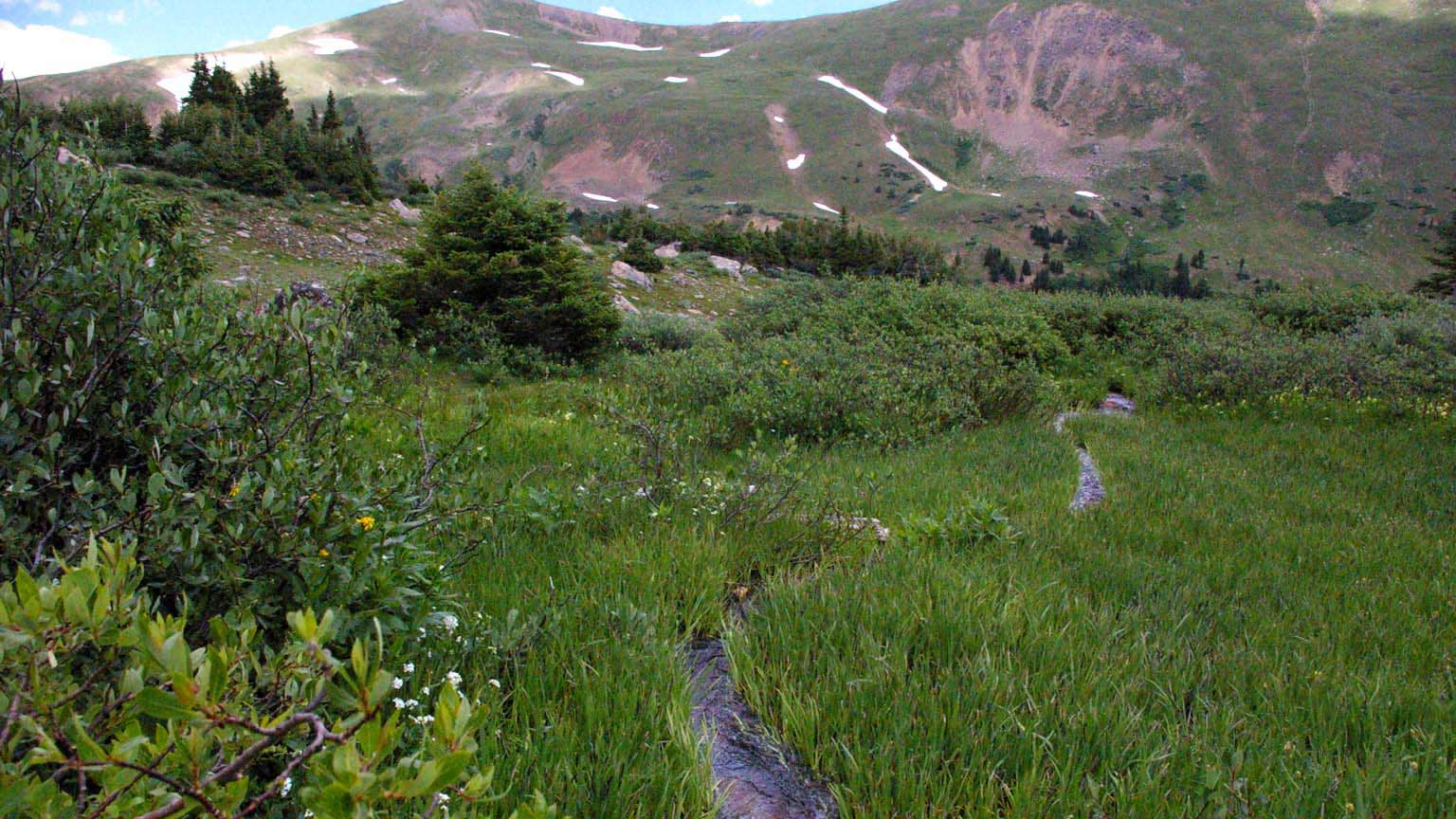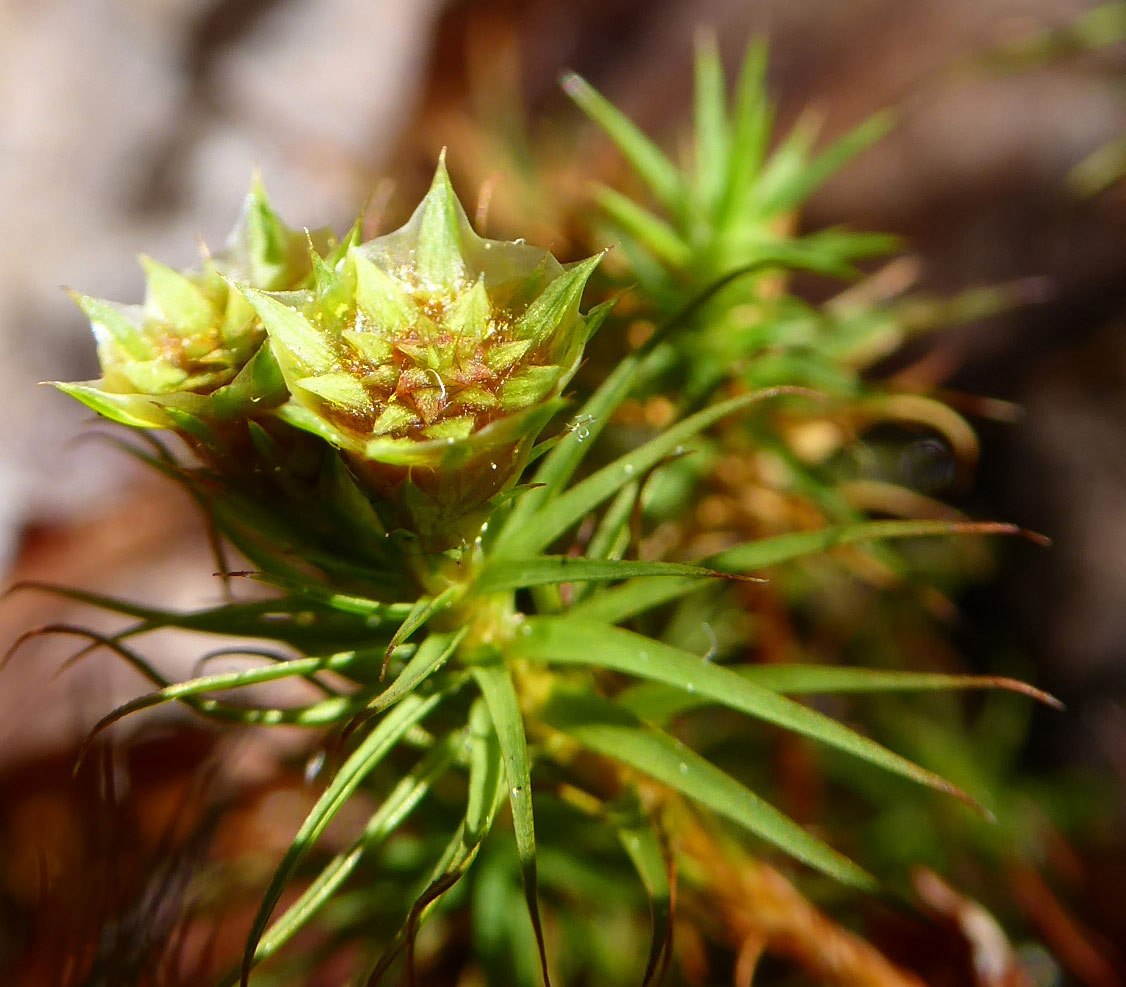Alpine Snowbed, Wet Meadow & Dwarf-shrubland
Loveland Lakes, Summit County, Colorado
When the surrounding landforms allow more water retention, alpine snowbeds, wet meadows and dwarf shrublands can occur in both the alpine and subalpine zones, supporting a new suite of plant associations. Characterized by land that is either inundated or saturated with water, and having soils low in oxygen and high in mineral content, wetlands can take many forms including: melting snowbeds, small depressions, streams, ponds, lakes, wet meadows, marshes, and the narrow strips of land bordering all those. Usually wetlands occur on the more gentle slopes, but in places where the groundwater can be retained, they can occur on slopes of up to ten percent.
The hydrophytes, or water loving plants, that grow in wet meadows form mosaics of several kinds of associations, usually dominated by graminoids, which are the grasses, rushes, and sedges. Sedges belong to the genus Carex, one of the largest genera of vascular plants with over 2,000 species. Because of their ability to adapt to the toughest of environments they are found in nearly every ecosystem world wide, so it is no surprise they have many species present and prolific in the high altitude wetlands. Intermixed with the gramainoids are herbaceous forbs such as marsh marigolds, (Caltha leptosepala), creeping sibbaldia, (Sibbaldia procumbens), and Parry’s clover, (Trifolium parryi).
Some Characteristic Plants
Click on photo to see full-page lightbox image.
In lightbox, click on X in upper right corner to return here.
Common Haircap Moss (Polytrichum commune)
Common Haircap Moss (Polytrichum commune), a moss in the Polytrichaceae Family which grows in wet areas like pond edges, swampy areas and fens in the montane and subalpine. The flower-like structure seen here is a splash cup, somewhat rare in mosses but are used on the male plant to disperse sperm when splashed by droplets of rain. Photo by Mo Ewing.
Frequently the wet meadows are bordered by stands of scattered to moderately dense dwarf shrubs. These shrublands often include willows, (Salix spp.), dwarf blueberry (Vaccinium cespitosum), alpine laurel, (Kalmia microphylla), and shrubby cinquefoil, (Diasphora fruiticosa). Photos and descriptions of many wetland plants can be found in our gallery, click here.
The Colorado Natural Heritage Program has developed an app and a field guide for help with both finding and identifying Colorado wetlands and the plants that inhabit them. They cost $11 but are replete with information and exhaustive libraries of excellent photos showing the wetland plants in 12 different types of wetland. The digital versions are available for both Android and IOS. https://cnhp.colostate.edu/cwic/library/field-guides/
Although wetlands cover only about two percent of Colorado’s area they are heavyweights in providing ecological value. Wetlands are the portion of the alpine/subalpine that act as sponges. They moderate the heavy flow of snowmelt in spring, and in summer months they release water slowly. They are not only providing for our water needs, but also filtering it and improving its quality by removing excess nutrients and chemical contaminants. The wetland areas are critical habitat for many species of wildlife, aquatic and terrestrial, and to unique native plants. It is, of course, the presence of these plants that makes it possible for the wetlands to function in the way they do.
~Sue Dingwell

